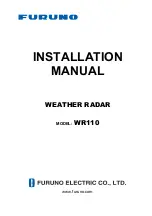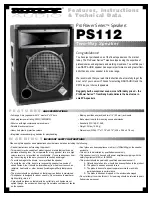
4
1.5. Side Lobe
The energy radiated from an antenna forms a field having a definite
radiation pattern
. A radiation
pattern is a way of plotting the radiated energy from an antenna. This energy is measured at various
angles at a constant distance from the antenna. The shape of this pattern depends on the type of
antenna used.
To plot this pattern, two different types of graphs, rectangular-and polar-coordinate graphs are used.
The polar-coordinated graph has proved to be of great use in studying radiation patterns. In the
polar-coordinate graph, points are located by projection along a rotating axis (radius) to an intersection
with one of several concentric, equally-spaced circles. The polar-coordinate graph of the measured
radiation is shown in Figure 1.5.
The main beam (or main lobe) is the region around the direction of maximum radiation (usually the
region that is within 3 dB of the peak of the main beam). The main beam in Figure 1.5 is northbound.
The side lobes are smaller beams that are away from the main beam. These side lobes are usually
radiation in undesired directions which can never be completely eliminated. The side lobe level (or side
lobe ratio) is an important parameter used to characterize radiation patterns. It is the maximum value of
the side lobes away from the main beam and is expressed in Decibels. One side lobe is called back
lobe. This is the portion of radiation pattern that is directed opposing the main beam direction.
The graph shows the rectangular-coordinated graph for the same source. In the rectangular- coordinate
graph, points are located by projection from a pair of stationary, perpendicular axes. The horizontal axis
on the rectangular-coordinate graph corresponds to the circles on the polar-coordinate graph. The
vertical axis on the rectangular-coordinate graph corresponds to the rotating axis (radius) on the
polar-coordinate graph. The measurement scales in the graphs can have linear as well as logarithmic
steps.
Beam Width:
The angular range of the antenna pattern in which at least half of the maximum power is still
emitted is described as a “Beam Width”. Bordering points of this main lobe are therefore the points
at which the field strength has fallen in the room around 3 dB regarding the maximum field
strength. This angle is then described as beam width or aperture angle or half power (- 3 dB) angle
- with notation Θ (also φ). The beam width Θ is exactly the angle between the 2 red marked
directions in the upper pictures. The angle Θ can be determined in the horizontal plane (with
notation Θ
AZ
) as well as in the vertical plane (with notation Θ
EL
).
Main and Side Lobes (Minor Lobes):
The pattern shown in the upper figures has radiation concentrated in several lobes. The radiation
intensity in one lobe is considerably stronger than in the other. The strongest lobe is called main
lobe; the others are (minor) side lobes. Since the complex radiation patterns associated with
arrays frequently contain several lobes of varying intensity that should learn to use appropriate
terminology. In general, main lobes are those in which the greatest amount of radiation occurs.
Side or minor lobes are those in which the radiation intensity is least.
Cumulonimbus
early detection
from low
altitudes
Start of
detection with
FURUNO radar
Start of detection with
conventional radar
Conventional
radar
FURUNO
radar
FURUNO radar
Conventional radar
Figure 1.3: FURUNO radar detects cumulonimbus
cloud faster than conventional radar
Figure 1.4: Image of using 3 radars
Summary of Contents for WR110
Page 1: ...INSTALLATION MANUAL WEATHER RADAR MODEL WR110 www furuno com...
Page 49: ...43 6 OUTLINE DRAWING 1 Antenna Unit...
Page 50: ...44 2 Junction Unit connection box...
Page 51: ...45 3 Junction Unit Wall mounted type...
Page 52: ...46 4 Data Processing Unit...










































